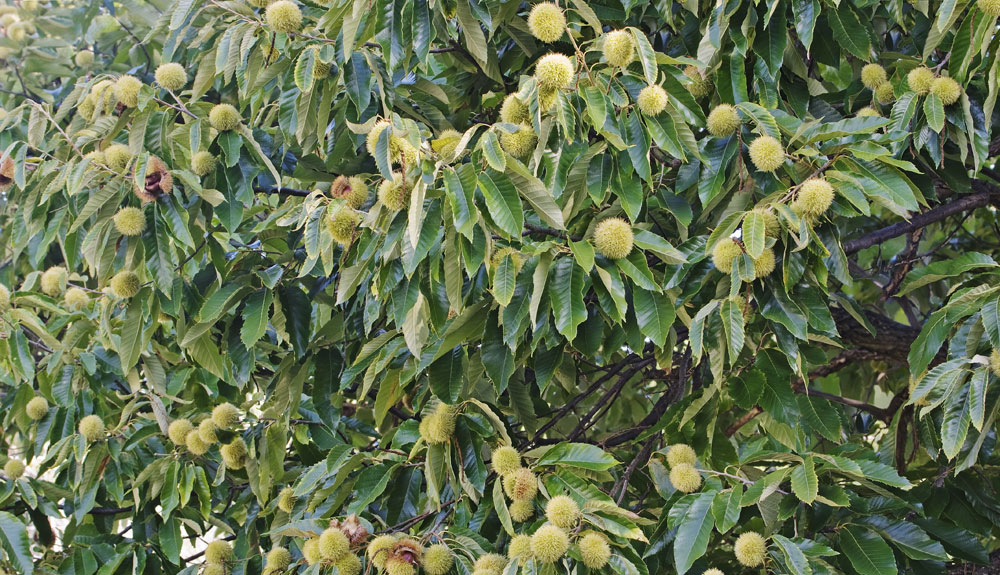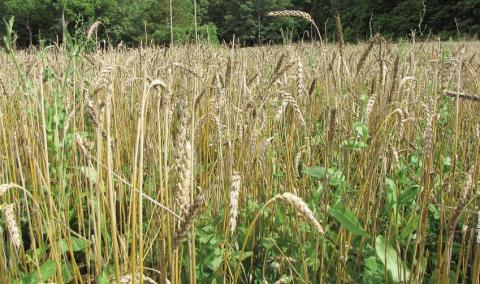
Hybrid Chestnuts have been all the rage for wildlife plantings and orchards for human consumption in the past few years, and for good reason. Once planted, it only takes about 3 years for them to begin producing nuts. They produce ANNUALLY, and boy do they produce heavy crops! The trees themselves can grow to 40-60 feet in height with an equal spread. Our chestnut seedlings come from orchards of grafted, commercial-type varieties (also called cultivars) with desirable traits both wildlife and humans prefer. Some of the named varieties we collect from may include ‘Colossal’, ‘Qing’, ‘Paragon’, ‘Dunstan’, ‘AU Homestead’, ‘Sleeping Giant’, and others. Our blight resistant chestnut seedlings can contain genetics from Chinese, European, Japanese, and American, but most often (as evidenced by their form, ID features, and tolerance/resistance to the blight) the majority of the bloodline is Chinese. Because of the mixed genotypes, and having been heavily bred for improvement, we refer to any of these domestic, “mostly Asian” chestnuts as hybrids.
As you may know, the American chestnut that ruled over most Eastern U.S. forests for ages has been reduced to being virtually extinct over the course of the last hundred years or so. In 1904, Cryphonectra parasitica was discovered in the Northeastern U.S., and has spread all the way to the Rockies. This “blight” die-off was one of the bigger tragedies in recent human history. The American chestnut grew very tall and fast, and the rot resistant wood was utilized for just about everything. The nuts dropping in the fall sustained all walks of wildlife, and it really threw the wildlife and ourselves for a loop when they literally disappeared.
With help from various groups such as the American Chestnut Foundation, the American Chestnut Cooperators Foundation, and the Ozark Chinkapin Foundation, the chestnut species that succumb to the blight will hopefully be back with a vengeance in their natural ranges within our lifetimes. Please support these organizations if you wish. Until the effects of the blight are back under control, many folks are choosing to plant blight resistant hybrids instead of the American chestnut. Blight resistant hybrid chestnuts (like ours) produce nuts that are usually about 3 times larger than the American version, but don’t have the timber type form or the rot resistant lumber of the Americans…they are strictly high-end nut producers.
Start growing your own wildlife magnets with Nativ Nurseries Blight Resistant Chestnut Orchard Bundle. For a limited time receive 12 rapid mast chestnut seedlings for 50% off regular price. Visit nativnurseries.com to learn more.



























